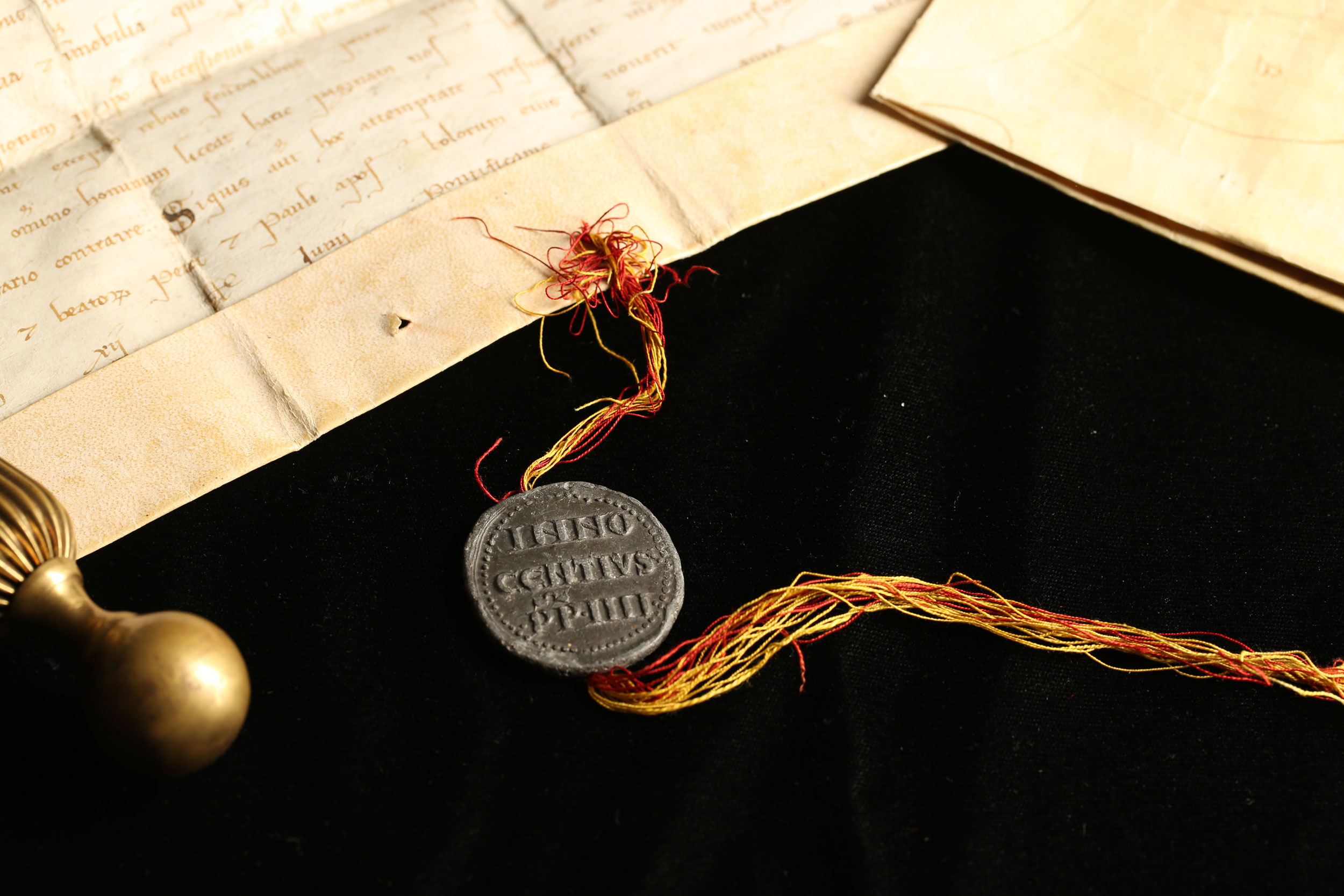A Letter from Pope Innocent IV, During Papal Exile, Helping to Establish a Spanish Monastery in 1247







Innocent is the Pope who sent messages to the rulers of the newly appeared Mongol invaders on Europe’s eastern front, at the same time as this document was produced
- Currency:
- USD
- GBP
- JPY
- EUR
- CNY
Papal orders to Spain, let alone this early, are uncommon
As the Almohad empire fell apart in the second quarter of the 13th century, the Christian rulers reconquered nearly all of Spain. James I of Aragon utilized Catalan naval power in 1229 to conquer the kingdom of Majorca (Mayūrqah), the first significant...
Papal orders to Spain, let alone this early, are uncommon
As the Almohad empire fell apart in the second quarter of the 13th century, the Christian rulers reconquered nearly all of Spain. James I of Aragon utilized Catalan naval power in 1229 to conquer the kingdom of Majorca (Mayūrqah), the first significant step in Catalan expansion in the Mediterranean. The subjugation of the kingdom of Valencia was more difficult, especially as James was diverted temporarily by the expectation of acquiring Navarre. When Sancho VII died without children, the people of Navarre accepted his nephew, Count Theobald of Champagne, as their king. Thereafter, French interest in Navarre steadily increased. Forced to give up his aspirations there, James I resumed the war against the Muslims and captured Valencia in 1238, bringing thousands of Muslims under his rule.
Pope Innocent IV (c. 1195-1254) was a canon lawyer before he served the papal curia and being elected Pope in 1243. He inherited a dispute with the Holy Roman Emperor from his predecessor, Gregory IX, over estates owned by the Papal States but had been seized by the Emperor. Emperor Frederick II went so far as two imprison two Cardinals, and he fomented anti-papal feeling in Italy, leading to Innocent IV’s secret flight from Rome in 1244, retreating to his native Genoa, and from there northwards to Lyon, safely in France and beyond the emperor’s immediate clutches. From here the Papal Curia continued to act, calling synods of bishops, and Innocent IV only returned to Italy on the death of Frederick II in 1250. He is also the Pope who sent missions to the rulers of the newly appeared Mongol invaders on Europe’s eastern front, at the same time as this document was produced. That lead by Giovanni da Pian del Carpine met the Great Khan Güyük in 1245, and that lead by Ascelin of Lombardy met the Mongol ruler Baichu in 1247. The first embassy received in return only a letter in Persian and Turkic (still in the Vatican Archives) that demanded the submission of the Pope and other rulers of Europe, while the second produced another similar letter accompanied by two Mongol emissaries named Aïbeg and Serkis, who came all the way to Lyon to demand submission, and that the Pope return with them to Karakorum to swear fealty to the Mongol Empire. He did not go.
The Abbey of Parraces was a prominent 14th and 15th century religious institution near the town of Segovia. It gained some of its lands through the incorporation of seized property from the great synagogue which once existed there and suffered the fate – confiscation – of other Jewish institutions during the Inquisition.
Papal letter, Lyon, dated 12 June 1247, issued by Pope Innocent IV for the abbot and community of Santa Maria de Parrazes (modern Párraces), of the Order of St. Augustine, in Segovia in Castile and Leon, granting them legal rights to their possessions, in Latin, manuscript document on vellum.
Small single-sheet document, written in 10 long lines in a fine gothic bookhand, with elongated st- and ct-ligatures, penwork capitals, opening pope’s name in tall and ornamental capitals and opening with a penwork initial, silk threads attached to a lead seal still present, some folds and a few spots and stains, else excellent condition, 9.75 x 6.5 inches
Provenance:
1. Written and sealed in Lyon during the period of papal exile during the papacy of Innocent IV after 1245, when his court withdrew to Lyon, for a Spanish recipient (note the later archival endorsement in Spanish on the reverse), most probably for the community of Santa Maria de Parrazes. The Augustinian canons were implanted into a pre-existing community in 1148 by Canon Navarro, as an outpost of the cathedral of Segovia. The house was in decline by the sixteenth century, and in 1565 only two canons remained, who sought permission to secularise the community and break their connection to the bishop of Segovia. It was annexed to the monastery of San Lorenzo de El Escorial in 1566, whence it fell under the influence of the Hieronymite Order, who used it as a school. In 1604 it was partly destroyed by fire, and subsequently passed into private hands. Records from the community are of substantial rarity.
2. Recently acquired from a Spanish owner, and exported from that country under export license

Frame, Display, Preserve
Each frame is custom constructed, using only proper museum archival materials. This includes:The finest frames, tailored to match the document you have chosen. These can period style, antiqued, gilded, wood, etc. Fabric mats, including silk and satin, as well as museum mat board with hand painted bevels. Attachment of the document to the matting to ensure its protection. This "hinging" is done according to archival standards. Protective "glass," or Tru Vue Optium Acrylic glazing, which is shatter resistant, 99% UV protective, and anti-reflective. You benefit from our decades of experience in designing and creating beautiful, compelling, and protective framed historical documents.
Learn more about our Framing Services


















































































































